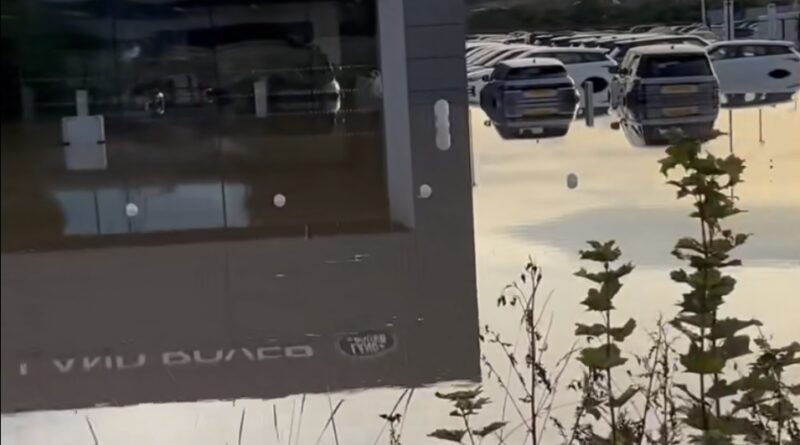The Category a Flood-Damaged Car Depends on damage
In this article, we will explore the various categories of flood damaged cars and how the extent of damage influences these classifications. Flood damage can wreak havoc on vehicles, turning them from functioning automobiles into potential liabilities. When it comes to assessing the aftermath of a flood, categorizing the damage is crucial. This categorization helps buyers, sellers, and insurers understand the extent of the harm a vehicle has suffered. Check vehicles history here.
Understanding Flood-Damaged Car Categories
When a vehicle is exposed to floodwaters, it can suffer a wide range of damages. The extent of these damages determines the category into which it falls, and this categorization plays a significant role in deciding what happens to the car next.
To familiarise with categories they are typically labeled as in old way:
- Category N (Non-structural damage): This category includes cars that have experienced minimal to no structural damage but have electrical or mechanical issues due to water exposure. These issues often require repairs to make the vehicle safe and roadworthy.
- Category S (Structural damage): Cars in this category have sustained damage to the structural components, which include the frame, chassis, or significant bodywork. Repairs may be possible, but they often involve extensive work and can be costly.
- Category C (Repairable salvage): These cars have suffered significant flood damage, making repairs necessary for them to become roadworthy again. However, the cost of repairs may exceed the vehicle’s value, making it a salvage vehicle that can be sold after repairs.
- Category D (Repairable salvage with minimal damage): This category is similar to Category C but includes vehicles with less extensive damage. Repairs are still required but are less expensive compared to Category C cars.
- Category X (Unrepairable salvage): Cars in this category have sustained such extensive damage that they are deemed unrepairable. Salvage yards may strip them for valuable parts or sell them for scrap.
New simplified classification:
- A – Scrap
- B – Break
- S – Repairable structural
- N – repairable non structural
- Factors That Influence Categorization
The extent of flood damage isn’t the only factor determining the category of a flood-damaged car. Other considerations play a role, including:
- Age and mileage: Older cars with high mileage may be more likely to be categorized as salvage because the cost of repairs may not be justifiable compared to the vehicle’s value.
- Cost of repairs: If the estimated repair cost exceeds a certain percentage of the car’s pre-flood value, it may be categorized as salvage.
- Structural damage: The presence of structural damage significantly affects categorization. Even if the rest of the vehicle is relatively intact, structural damage can push it into a higher category.
- Mechanical and electrical issues: Vehicles with extensive mechanical or electrical problems may be considered salvage even if they have minimal physical damage.
- Title status: The flood-damaged car’s title is often marked with the assigned category, making it clear to potential buyers and insurers.
- Why Categorization Matters
Vehicles with flood damage should be categorised as follows:
Category A: Vehicles with no useable parts.
Vehicles that have been totally submerged in any water types.
Category B: Vehicles with useable parts.
Vehicles that have corrosive, contaminated, polluted or salt water damage.
Vehicles which have been subjected to flood water ingress in the passenger compartment to a level
which causes significant damage to the electrical and safety components.
Category N: All other flood damaged vehicles which fall within the code.
The salvage agent or buyer must make vehicle/ spare part purchasers aware of the nature and origin of the vehicle’s
original damage and only allow parts re-sale of usable parts that are safe to handle and re-use.
The category of a flood-damaged car plays a critical role in the resale value, insurance coverage, and safety of the vehicle. Buyers should be aware of the category to make an informed decision when purchasing a used car. Insurers also use these categories to determine coverage eligibility and premiums. Check history now.
What happens after and how data gets to finance companies and public information from motor vehicle salvage code of practice:
Any changes in a category must be notified to MIAFTR(Motor Insurance Anti-Fraud Theft Register) and to any party whom the affected vehicle has been transferred as soon as reasonably practical.
Following re-classification. Where the vehicle no longer falls within any of the categories, DVLA should be notified.
Such a communication should include the claim reference number, Vehicle Registration Mark, make and model, Vehicle Identification Number (if
available) and the date of accident. Insurers/ self-insured should allow a minimum of 48 hours to elapse after updating MIAFTR before raising any
related enquiries with DVLA. All notifications to MIAFTR whether indicating theft or damage are passed to vehicle data agencies for a finance check. The data agencies use the information to provide a vehicle check service to the motor trade and the public. It is essential that loss information on MIAFTR is accurate and up to date.
Conclusion
Categorizing flood-damaged cars is essential for both buyers and sellers in the used car market. It helps establish the extent of the damage, the potential for repair, and the safety of the vehicle. As a potential buyer, always investigate a car’s category before making a purchase, and sellers should transparently disclose the information to ensure a fair transaction. Understanding these categories can help everyone involved in the process navigate the complex world of flood-damaged vehicles more effectively. Check now.
Buying a used VW. Buying used vauxhall, BMW, Jaguar, Ford, Volvo, Range rover, Bentley, Aston Martin, Porsche, Ferrari, Lamborghini, Maserati, Hyundai

